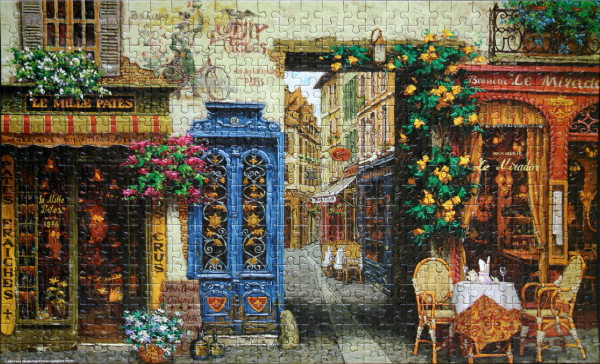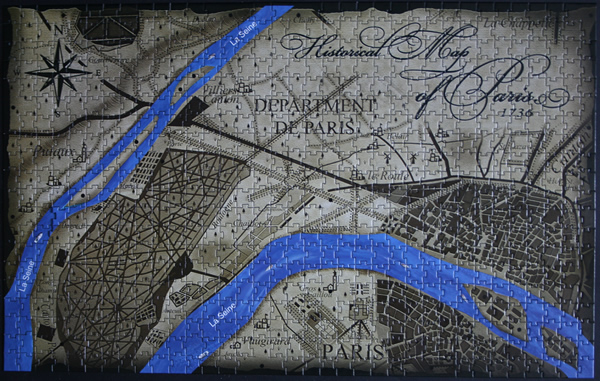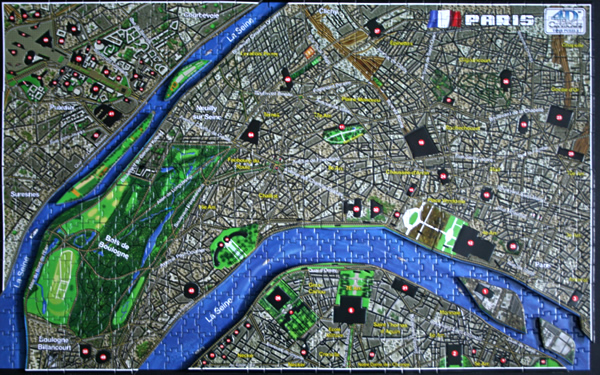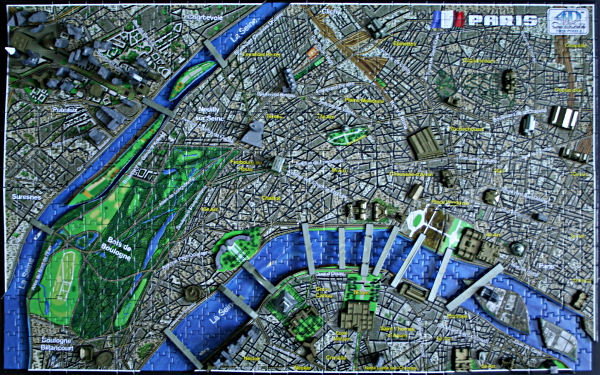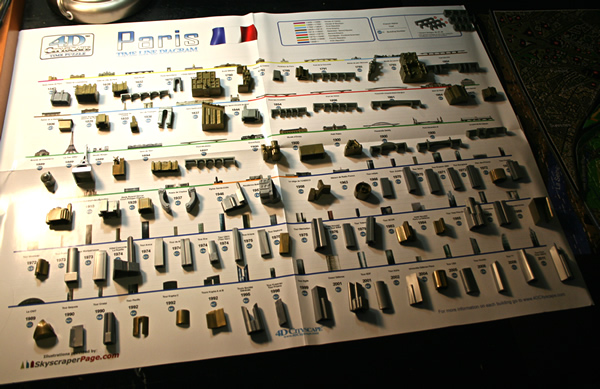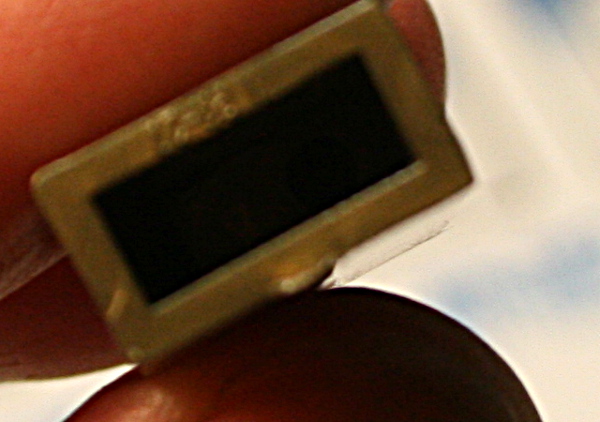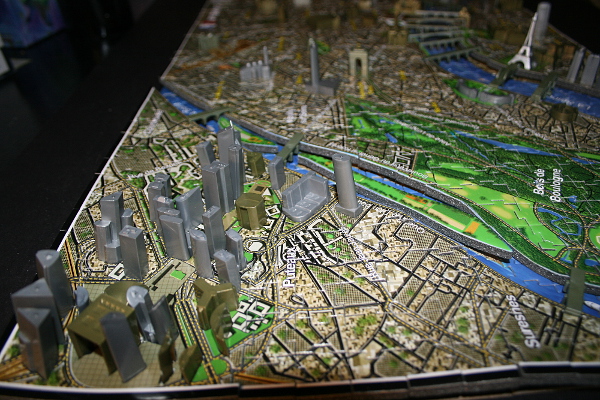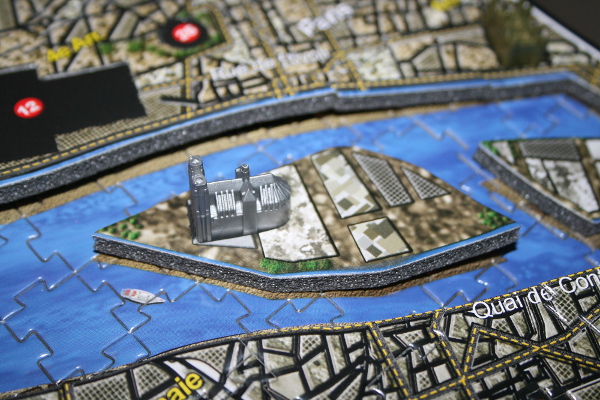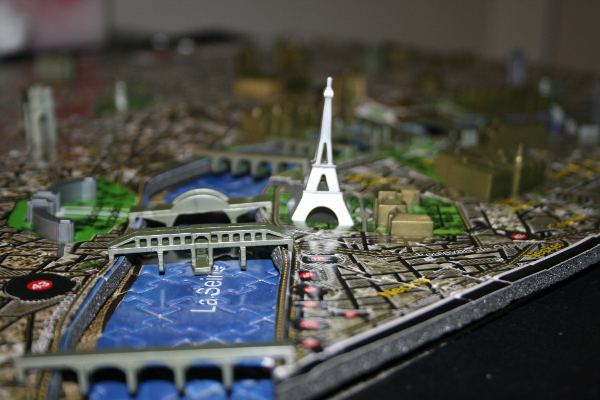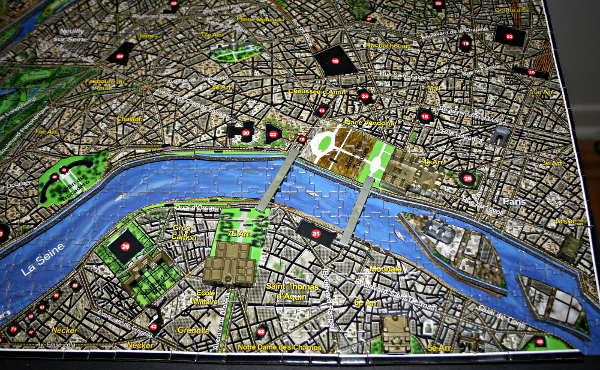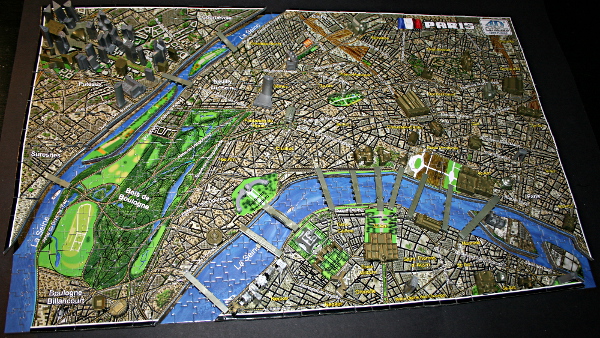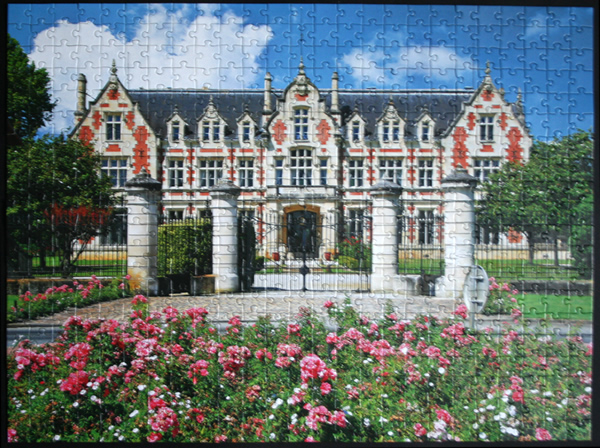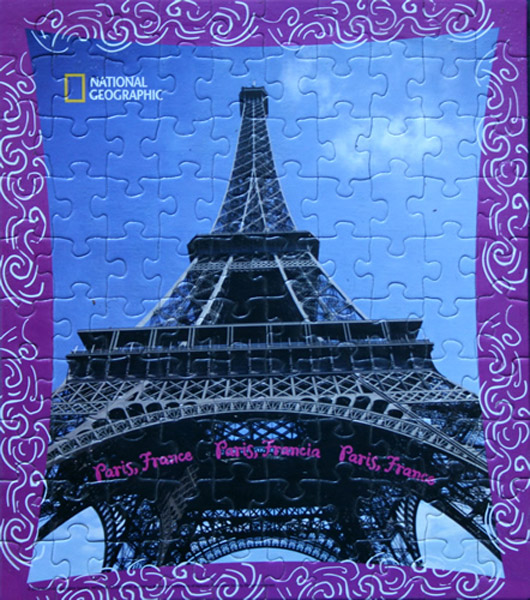
Size: 500 pieces
Available for purchase on eBay
Dimensions: 33.02 cm x 48.26 cm
Manufacturer: The Canadian Group, #10085
Photographer: Canadastock/Shutterstock
Box: photo
Tag: France
Ponte Alexandre III
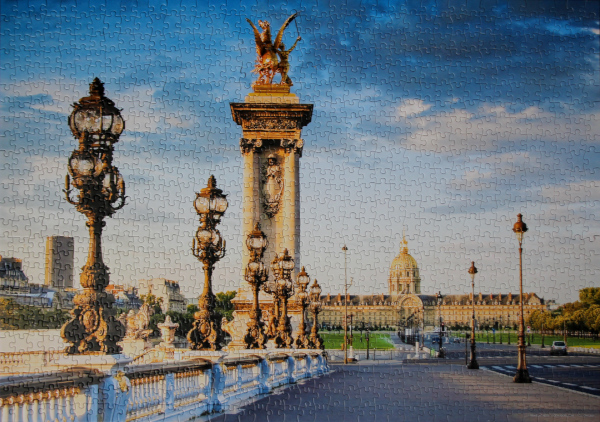
Size: 1000 pieces
Available for purchase on eBay
Dimensions: 48.26 cm x 68.58 cm
Manufacturer: The Canadian Group, #03858
Photographer: Travelwitness
Box: photo
Notre Dame Cathedral in Paris
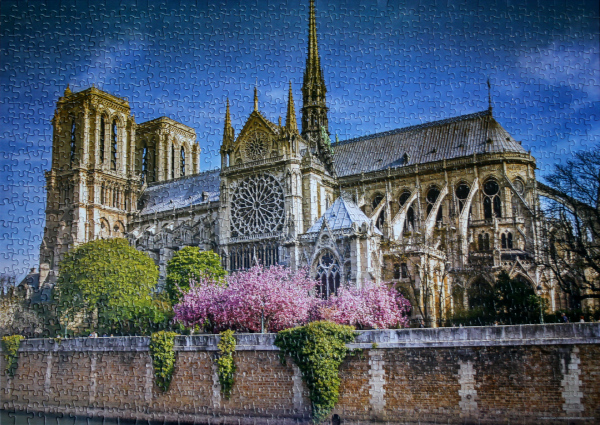
Size: 1000 pieces
Available for purchase on eBay
Dimensions: 48.26 cm x 68.58 cm
Manufacturer: The Canadian Group, #10226
Photographer: Didier Laurent
Original: photograph
Box: photo
Puzzle: Provence
Size: 1000 pieces
Dimensions: 67.95 cm x 48.10 cm
Producer: Mega Puzzles, Vibrant series, 2014, No.51420ACN, A12054LP
Puzzle: This puzzle does not have a title or specify where exactly this place is. If you know, please do share.
Another one from the Vibrant series, this is a well-done puzzle with beautiful imagery. It combines bright colours and subtle shades, clear borders and soft transition, as well as a variety of textures to convey the feel of stone of the building, metal of the lantern, sky, bright flowers, sharp branches, prickly succulents, and soft grass. The differences in colour and texture make the assembly simpler.
Good starting points are the sky bordering the trees and the roof, the lantern light, the window shutters, red flowers, darker building wall, yellow grass bordering on green trees, the blue patch in the distance, and the succulents on the left. The trees, succulents, and wall borders provide vertical guides, whereas the balcony floor, grass-tree boundary and grass-pavement boundary act as horizontal guides.
Puzzle: Rue Lafayette Paris by Viktor Shvaiko
Size: 504 pieces
Dimensions: 45.7 cm x 27.3 cm
Producer: Sure-Lox pieces. Company unknown – I do not have the box anymore. If you have this information, please do share. There were 4 puzzles in the box: Autumn in Paris, Buca Francesco, Rue Lafayette Paris, and Sunset Blaze – all by the same artist.
Artist: Viktor Shvaiko
Puzzle: Crisp and bright colours, clear borders, and well-fitting Sure-Lox pieces make this puzzle a breeze to do. Easiest regions to start are the store banners with writing, the yellow-flowered green vine, the blue booth, the various flower arrangements, the window in the top left corner, and the table and chairs on the right. The pavement, the painting above the blue booth, and the arch with the lantern can come next, leaving the buildings further away and the smaller detail of the storefronts to complete the puzzle.
Puzzle: Autumn in Paris by Viktor Shvaiko
Size: 504 pieces
Dimensions: 45.7 cm x 27.3 cm
Producer: Sure-Lox pieces. Company unknown – I do not have the box anymore. If you have this information, please do share. There were 4 puzzles in the box: Autumn in Paris, Buca Francesco, Rue Lafayette Paris, and Sunset Blaze – all by the same artist.
Artist: Viktor Shvaiko – Russian artist Viktor Shvaiko was born August 23, 1965 in the Altai region. He grew up among the beautiful and rich landscapes of Siberian nature. He vision of beauty and passion for art helped him to enter the Novoaltaisk Artistic School. After graduation Viktor Shvaiko and his family left Altai for Pridnestrovie (Transkarpthia). There first exhibition of paintings was in Moukachevo in 1990, then a group exhibition in Hungary in 1991, and in Russia. In 1991 Viktor Shvaiko went to Italy. It was there Russian traveling artist Viktor Shvaiko painted beautiful images of cosy cafe areas around Italy, also in France. These paintings full of light illuminate the beauty of sunsets and dawns on the background of cityscapes. [All of Russia site]
Puzzle: A beautiful puzzle, easy to do due to its small size and well-fitting Sure-Lox pieces. Great places to start are the red storefront with yellow letters, the beige and brown wall regions above, the Pharmacie banners, the blue store front on the crossing street, and the grey windows in the top right corner. The pavement, yellow leaves, white pavement borders, and the painting above Pharmacie sign can be completed next, leaving the black Pharmacie store front, the windows above the red store front, and a few other small regions to complete the puzzle.
Puzzle: Colmar, Alsace, France
Size: 1000 pieces
Dimensions: 66.52cm x 51.12cm
Producer: Big Ben
Puzzle: Beautiful puzzle, not completely trivial, due to many small colourful regions. Some of the best places to tackle first are the blue of the sky and the water, sky and rooftop boundary, bright yellow regions, and the orange and grey building in the right quarter of the picture. The white umbrellas, green neon lights, umbrella reflections, and tall building in the centre and its reflection can be assembled next, leaving many smaller regions to complete the puzzle.
Notes: Colmar is the third-largest commune of the Alsace region in north-eastern France. Colmar was founded in the 9th century. Colmar’s secular and religious architectural landmarks reflect eight centuries of Germanic and French architecture and the adaptation of their respective stylistic language to the local customs and building materials (pink and yellow Vosges sandstone, timber framing).
The Municipal Library of Colmar owns one of the richest collections of incunabula in France, with more than 2,300 volumes. This is quite an exceptional number for a city that is neither the main seat of a university, nor of a college, and has its explanation in the disowning of local monasteries, abbeys and convents during the French Revolution and the subsequent gift of their collections to the town. [Wiki]
Puzzle: Rochefort en Terre, Brittany, France
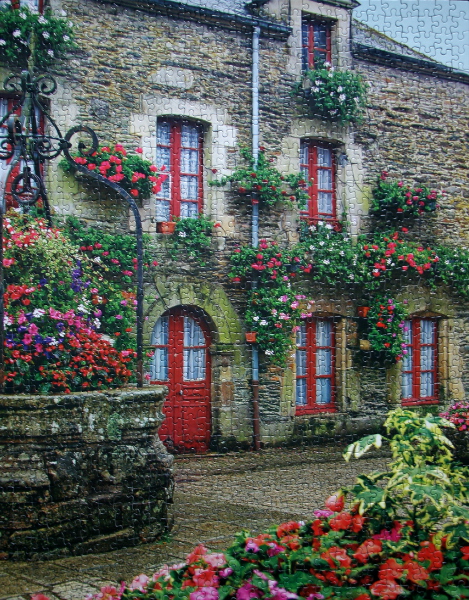
Size: 1000 pieces
Dimensions: 51.12cm x 66.52cm
Producer: Hasbro, MB Puzzles, Big Ben, 2005, #04962-G52
Puzzle: A pleasant puzzle to do, for stone parts good lighting is a plus. A good place to start are the windows and the door as well as the large bright flowers and leaves in the bottom right and the border of the roof and the sky. After that, the window borders, the water pipe, and the iron structure in the top left can serve as guides. Flowers and the rest of the stone work can follow. Not a completely trivial puzzle, but quite enjoyable.
Notes: Rochefort-en-Terre is a commune in the Morbihan department of Brittany in north-western France. Inhabitants of Rochefort-en-Terre are called in French Rochefortais. [Wiki]
Brittany is one of the 27 regions of France. It occupies a large peninsula in the northwest of the country, lying between the English Channel to the north and the Bay of Biscay to the south. Its capital is Rennes. The name of Brittany derives from settlers from Great Britain, who fled that island in the wake of the Anglo-Saxon conquest of England between the fifth and seventh centuries. [Wiki]
Puzzle: Galleries Lafayette, Paris
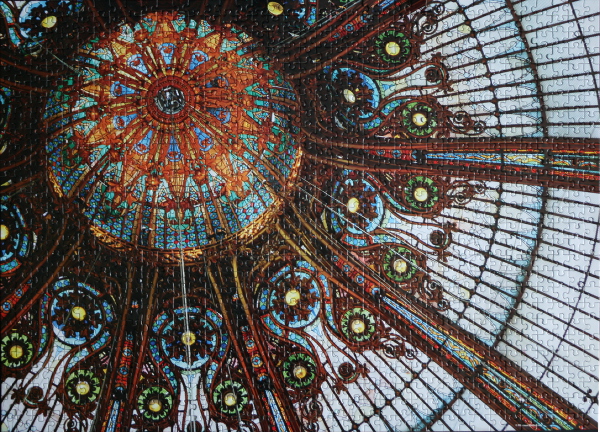
Size: 1000 pieces
Dimensions: 67.95 cm x 48.1 cm
Producer: Mega Puzzles, Structures series, 2013, No. 50941AAN, A 27053 PP
Puzzle: A non-trivial puzzle from the Structures series (see Astronomical Clock, Prague, Czech Republic and Church of the Savior, St. Petersburg for more), with a repeating radial pattern. Due to many similar regions and repeated geometrical patterns, this puzzle is challenging. The easiest place to start is the top left corner with the distinct orange, green and blue part of the dome, followed by its golden border and brown and golden thick supports that fan out of the dome, with flower patterns inside. Several white supports spreading from the dome can be used as guides. The yellow centres of the large flowers within the stained glass pattern can be positioned based on their differences, and the blue and green flowers can be assembled in place. The circular brown guides supporting the white and blue glass make it easier to complete the bottom right corner. Overall not a quick but an enjoyable puzzle to do, natural light is a plus.
Notes: The Galeries Lafayette (is an upmarket French department store company located on Boulevard Haussmann in the 9th arrondissement of Paris. In 1895, Théophile Bader and his cousin Alphonse Kahn opened a fashion store in a small haberdasher’s shop at the corner of rue La Fayette and the Chaussée d’Antin, in Paris. In 1896, their company purchased the entire building at 1 rue La Fayette; in 1905 they acquired the buildings at 38, 40 and 42, boulevard Haussmann and 15 rue de la Chaussée d’Antin. Bader commissioned the architect Georges Chedanne and his pupil Ferdinand Chanut to design the store at the Haussmann location, where a glass and steel dome and Art Nouveau staircases were finished in 1912. [Wiki]
Puzzle: 4D – Historical Map of Paris
The bottom layer jigsaw is a historic illustration of Paris in 1736 (base puzzle):
The second layer jigsaw puzzle is of Paris in the present year (landscape puzzle):
The third layer are buildings (3D replicas):
See below for the notes and additional images.
Size: 1100+ pieces – Layer 1: 656 pieces, Layer 2: 369 pieces, Layer 3: 88 pieces
Dimensions: 60.9 cm x 38.1 cm x 0.51 cm
Producer: 4D Cityscape, Time Puzzle series
Notes: 4D Cityscape allows you to build Paris starting from the year 1345. You first build the patented floor puzzle that consists of 1025 jigsaw pieces. Then you refer to the 4D Time Poster to identify and place each skyscraper on the map. This process is assembled in a time sequence according to the year each building was built. Experience and rebuild the past, present, and future! For ages 8+ to 108 years. [Puzzle box]
- Place each building on the map starting in 1345 with Notre Dame.
- Place Arc de Triomphe on the map in the year 1836.
- Rebuild Paris’s historical skyline including La Tour Eiffel in 1889.
- Learn the location, shape, and appearance of the Paris skyline. [Puzzle box]
Puzzle:
The first layer of the puzzle was fun to do – the river provides a good horizontal guide, large writing and the wind rose follow, and the rest of the islands, building blocks, and streets fall into place. The puzzle is well-cut and pieces generally fit together well.
The second layer of the puzzle was a bit more cumbersome, just because of the foam pieces that sometimes don’t fit together that well if they are bent. The dark placeholders with red numbers indicate where the building figures are to be placed at the next stage. This part was overall easy to do. The islands make their own smaller piece clusters.
The building figures were quite disappointing. First of all, the detail they are portrayed on the poster below does not exist in the pieces themselves. They are quite roughly made from plastic of silver or gold colour, and barely resemble their counterparts on the poster. Matching them was hard to do.
Presumably, to help with the matching, each figure had a number engraved on its bottom that corresponded to the number on the map and on the poster. But here comes the second problem: most of the pieces had numbers so tiny (see a closeup photo below) that they were very hard to distinguish, even with a magnifying glass.
Third issue came from the nature of interaction of the foam top layer and the plastic pieces. Especially in the areas where many buildings are clustered together, such as the corner of the map pictured below, or where two coasts are connected by multiple bridges close to each other, you can see the foam warping around the plastic pieces that fit into the map. This made the end puzzle a bit wobbly and not as aesthetically pleasing as the packaging would make you believe.
Generally, I have enjoyed making the puzzle layers and then building up the Paris model in the chronological order indicated on the poster. Some pieces do look nice close up, and it was fun to explore the evolution of the city.
Puzzle: Wine Cellar Château Cantenac-Brown, France
Size: 500 pieces
Dimensions: 46 cm x 61 cm
Producer: The Lafayette Puzzle Factory, Colorluxe, 2012, #3091
Notes: This puzzle is a pleasure to do – the most complicated area is the flowers, but having placed everything else, that only leaves about 2-3 rows of pieces. I have started with the sky and the building top, followed by the pillars, the trees, grass, gate and the ground in front of it, the building, and finished with the flowers. Sat down to puzzle for half an hour, got up about 2 hours later with the puzzle completed. This is a relaxing one.
Château Cantenac-Brown: Château Cantenac-Brown is a winery in the Margaux appellation of the Bordeaux region of France. The wine produced here was classified as one of fourteen Troisièmes Crus (Third Growths) in the historic Bordeaux Wine Official Classification of 1855. The Chateau has 104 acres (0.42 km2) planted with Cabernet Sauvignon, Merlot and Cabernet Franc. The Chateau produces a second wine labeled as Brio de Cantenac-Brown. [Wiki]
Puzzle: La Roche Courbon Castle, France
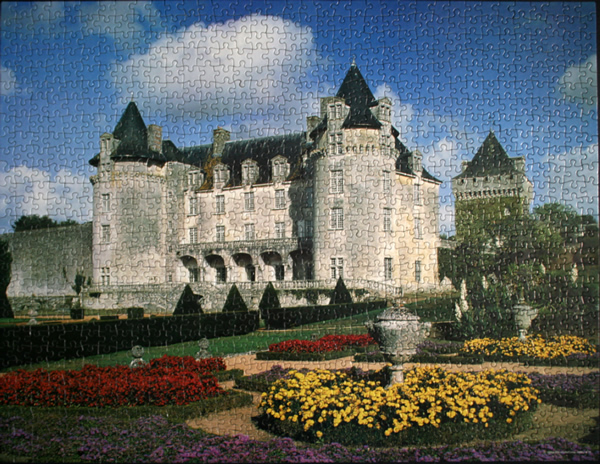
Size: 1000 pieces
Dimensions: 51.12cm x 66.52cm
Producer: Big Ben, MB Puzzles, Hasbro, 2007
Notes: Chateau de la Roche Courbon is a large chateau, developed from an earlier castle, in the Charente-Maritime departement of France. It is in the commune of Saint-Porchaire between Saintes and Rochefort.
A castle was built around 1475 by Jehan de Latour, on site which had been inhabited since prehistoric times. In the 17th century, the Courbon family, which had occupied the castle for two centuries, transformed it into a more comfortable residence. More alterations were made in the 18th century, but it was eventually sold in 1817 and then abandoned. It was purchased in 1920 by Paul Chenereau, who restored the chateau and its gardens. The chateau is still owned and inhabited by his descendants.
The gardens include orchard, flower garden, geometrical flower beds and lawns surrounding a small lake (‘mirror pool’). The River Bruant flows through the gardens, feeding the water features. Beyond that, an ornamental staircase leads to higher ground, on the far side of the river. [Wiki]
Puzzle: Hôtel de Ville, Paris, France

Size: 1000 pieces
Dimensions: 80.65cm x 56.2cm
Producer: The Canadian Group, Sure-Lox, It’s Framed series, 2004, #80630
Notes: The Hotel de Ville in Paris, France, is the building housing the City of Paris’s administration.
In July 1357, Etienne Marcel, provost of the merchants (i.e. mayor) of Paris, bought the so-called maison aux piliers (“House of Pillars”) in the name of the municipality on the gently sloping shingle beach which served as a river port for unloading wheat and wood and later merged into a square, the Place de Greve, a place where Parisians often gathered, particularly for public executions. Ever since 1357, the City of Paris’s administration has been located on the same location where the Hotel de Ville stands today. Before 1357, the city administration was located in the so-called parloir aux bourgeois near the Chatelet.
Since the French Revolution, the building has been the scene of a number of historical events, notably the proclamation of the French Third Republic in 1870 and the famous speech by Charles de Gaulle on 25 August 1944 during the Liberation of Paris when he greeted the crowd from a front window. [Wiki]
Puzzle: Paris, France
Size: 100 pieces
Dimensions: 23.17cm x 26.35cm
Producer: RoseArt, National Geographic series
Notes: The Eiffel Tower (French: La Tour Eiffel, nickname La dame de fer, the iron lady) is a wrought iron lattice tower located on the Champ de Mars in Paris. Built in 1889 as the entrance arch to the 1889 World’s Fair, it has become both a global cultural icon of France and one of the most recognizable structures in the world. The tower is the tallest building in Paris and the most-visited paid monument in the world; millions of people ascend it every year. It is named after the engineer Gustave Eiffel, whose company designed and built the tower.
The tower stands 320 metres tall, about the same height as an 81-story building. During its construction, the Eiffel Tower surpassed the Washington Monument to assume the title of the tallest man-made structure in the world, a title it held for 41 years, until the Chrysler Building in New York City was built in 1930. [Wiki]
Puzzle: Chateau Fontainebleu, France
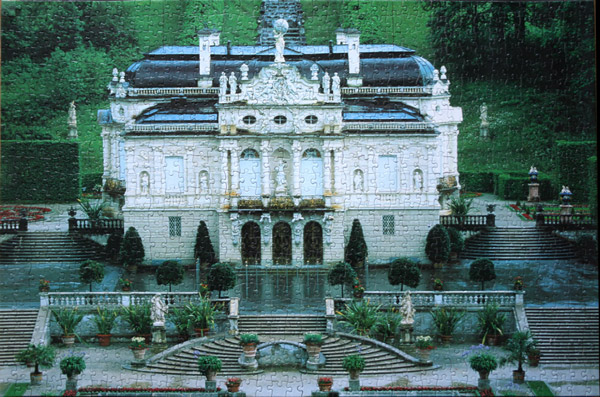
Size: 1000 pieces
Dimensions: 73cm x 48.6cm
Producer: Sure-Lox, The Canadian Group, Impressions series
Notes: The Palace of Fontainebleau, located 55 kilometres from the centre of Paris, is one of the largest French royal chateaux. The palace as it is today is the work of many French monarchs, building on an early 16th century structure of Francis I. The building is arranged around a series of courtyards. The city of Fontainebleau has grown up around the remainder of the Forest of Fontainebleau, a former royal hunting park.This forest is now home to many endangered species of Europe.
The palace introduced to France the Italian Mannerist style in interior decoration and in gardens, and transformed them in the translation. The French Mannerist style of interior decoration of the 16th century is known as the “Fontainebleau style”: it combined sculpture, metalwork, painting, stucco and woodwork, and outdoors introduced the patterned garden parterre. The Fontainebleau style combined allegorical paintings in moulded plasterwork where the framing was treated as if it were leather or paper, slashed and rolled into scrolls and combined with arabesques and grotesques. Fontainebleau ideals of female beauty are Mannerist: a small neat head on a long neck, exaggeratedly long torso and limbs, small high breasts—almost a return to Late Gothic beauties. [Wiki]
Puzzle: Cote d’Azur, France

Size: 1000 pieces
Dimensions: 73cm x 48.5cm
Producer: Sure-Lox, The Canadian Group
Notes: The Cote d’Azur, often known in English as the French Riviera, is the Mediterranean coastline of the southeast corner of France, also including the sovereign state of Monaco. There is no official boundary, but it is usually considered to extend from the Italian border in the east to Saint Tropez, Hyeres or Cassis in the west.
The French Riviera coastline covers 560 miles and consists of both sand and shingle beaches. Officially, the Cote d’Azur is home to 163 nationalities with 83,962 foreign residents, although estimates of the number of non-French nationals living in the area are often much higher. Its largest city is Nice, which has a population of 347,060 (2006).
The name was given to the coast by the writer Stephen Liegeard in his book, La Cote d’azur, published in December 1887. Liegeard was born in Dijon, in the French department of Cote-d’Or, and adapted that name by substituting the azure blue colour of the Mediterranean for the gold of Cote-d’Or. [Wiki]
Puzzle: Loire Valley, France
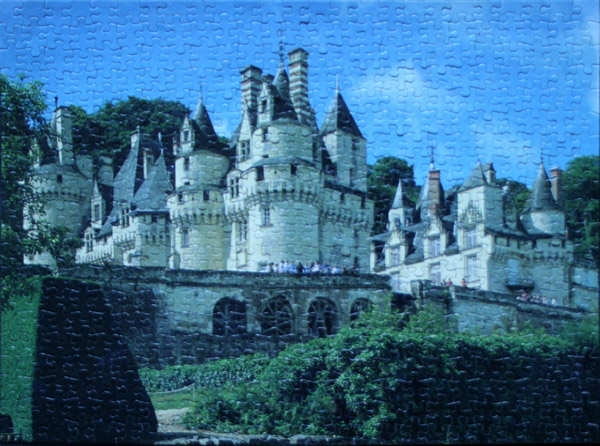
Size: 500 pieces
Dimensions: 35cm x 48cm
Producer: Canada Games, Windsor
Location: The Loire Valley (French: Vallée de la Loire), spanning 280 kilometres, is located in the middle stretch of the Loire River in central France. It comprises an area of approximately 800 square kilometres. It is referred to as the Cradle of the French Language, and the Garden of France due to the abundance of vineyards, fruit orchards, artichoke, asparagus and cherry fields which line the banks of the river. Notable for its historic towns, architecture and wines, the valley has been inhabited since the Middle Palaeolithic period.
The valley includes historic towns such as Amboise, Angers, Blois, Chinon, Nantes, Orléans, Saumur, and Tours.
The architectural heritage in the valley’s historic towns is notable, especially its castles, such as the Châteaux d’Amboise, Château de Chambord, château d’Ussé, Château de Villandry and Chenonceau. The châteaux, numbering more than three hundred, represent a nation of builders starting with the necessary castle fortifications in the 10th century to the splendor of those built half a millennium later. When the French kings began constructing their huge châteaux here, the nobility, not wanting or even daring to be far from the seat of power, followed suit. Their presence in the lush, fertile valley began attracting the very best landscape designers. In addition to its many châteaux, the cultural monuments illustrate to an exceptional degree the ideals of the Renaissance and the Age of the Enlightenment on western European thought and design. [Wiki]
Puzzle: Cher Bourges Cathedral

Size: 500 pieces
Dimensions: 48.26 cm x 35.56 cm
Producer: The Canadian Group, Sure-Lox, Churches and Cathedral series
Notes: Bourges Cathedral (Cathedrale Saint-Etienne de Bourges) is a cathedral, dedicated to Saint Stephen, located in Bourges, France. It is the seat of the Archbishop of Bourges.
It is based on the Notre-Dame in Paris but with significant differences in design. The cathedral is noted for its unique feats of architecture, impressive sculptures and thirteenth-century stained glass windows.
Bourges Cathedral has a highly unique floor plan. It has no transepts, which form the cross-shape of most churches. This lends the cathedral a unique appearance inside and out. On the exterior, thick walls and a myriad of flying buttresses support the unbroken weight of the long nave (122m).
Bourges Cathedral retains almost all its original ambulatory glass (apart from the axial chapel), dating from about 1215. The iconography used in many of these windows uses typology (such as Old Testament episodes prefiguring events in the life of Christ) and symbolism (such as the pelican who pecks her breast to feed her young on her own blood and the lioness who licks the malformed cub into shape) to communicate theological messages. Other windows show the parables of the Good Samaritan and the Prodigal Son, the story of Dives and Lazarus, and the Apocalypse. [Wiki]
Puzzle: Normandy Harbour

Size: 500 pieces, 1 missing
Producer: Puzzle World
Notes: Normandy (French: Normandie, Norman: Nourmaundie, from Old French Normanz, plural of Normand, originally from the word for “northman” in several Scandinavian languages) is a geographical region corresponding to the former Duchy of Normandy. It is situated along the English Channel coast of Northern France between Brittany (to the west) and Picardy (to the east) and comprises territory in northern France and the Channel Islands. The continental territory covers 30,627 km² and forms the preponderant part of Normandy and roughly 5% of the territory of France.
Parts of Normandy consist of rolling countryside typified by pasture for dairy cattle and apple orchards. A wide range of dairy products are produced and exported. Norman cheeses include Camembert, Livarot, Pont l’Évêque, Brillat-Savarin, Neufchâtel, Petit Suisse and Boursin. Normandy butter and Normandy cream are lavishly used in gastronomic specialties.
Normandy is a major cider-producing region (very little wine is produced). Perry is also produced, but in less significant quantities. Apple brandy, of which the most famous variety is calvados, is also popular. The mealtime trou normand, or “Norman hole”, is a pause between meal courses in which diners partake of a glassful of calvados in order to improve the appetite and make room for the next course, and this is still observed in many homes and restaurants. [Wiki]
Puzzle: Chambord Château

Size: 1000 pieces
Dimensions: 73cm x 48.5cm
Producer: Sure-Lox
Notes: The royal Château de Chambord at Chambord, Loir-et-Cher, France is one of the most recognizable châteaux in the world because of its very distinct French Renaissance architecture that blends traditional French medieval forms with classical Italian structures.
The building, which was never completed, was constructed by King François I in part to be near to his mistress the Comtesse de Thoury, Claude Rohan, wife of Julien de Clermont, a member of a very important family of France, whose domaine, the château de Muides, was adjacent. Her arms figure in the carved decor of the château. [Wiki]







